Stadiums around the globe set the standard to secure the safety of their spectators, staff and other involved parties. A&S digs deep to address the specific issues and their respective solutions that make today's stadiums a safer place to be.
Stadiums around the globe set the standard to secure the safety of their spectators, staff and other involved parties. A&S digs deep to address the specific issues and their respective solutions that make today's stadiums a safer place to be.
Large-scale sporting events such as the World Cup and the Olympics will help the global sports market hit roughly US$100 billion in 2009, reported PricewaterhouseCoopers. Keeping in mind the sheer number of people involved and the elevated levels of emotion often present, high-profile sporting events increase in measure as high-value targets for a number of threats. Large-scale sports venues, thus, set the standard for stadium security measures around the world.
While threats of terrorism remain a growing concern for stadiums, other issues of safety include managing unruly crowds, protecting athletes and staff, and ensuring that all patrons come to no harm during the games. Currently, there are few legislations aiming to enforce stadiums to abide by international or even national security standards; however, the fact that the threats mentioned above vary from country to country, sport to sport, and depend on the stadium's capacity and location, makes it all the moreimportant that stadiums set a certain standard for security.
 The United States has developed recommendations that outline security measures stadiums should take, such as conduct risk assessments, implement video surveillance and access control equipment, train security personnel as well as urge government agencies to take part in the overall planning and security of the venue. Currently stadium directors or owners are, however, not held accountable if their venue does not abide by these recommendations. European countries such as England, due to a history of hooliganism, have enacted safety legislation requiring each football club to hold a stadium ‘Safety Certificate'. Every football club in the top four divisions must acquire this safety certificate to operate and be open to the public, said Dr. Stacey Hall, Associate Director of the Center for Spectator Sports Security Management and Assistant Professor for Sports Management at the University of Southern Mississippi. Furthermore, Europe's Union of European Football Association (UEFA) Waiver demands stadiums to be fully compliant with its rules and regulations in order to host big games, said Bruno Morini, International Business Development Director, Zucchetti.
The United States has developed recommendations that outline security measures stadiums should take, such as conduct risk assessments, implement video surveillance and access control equipment, train security personnel as well as urge government agencies to take part in the overall planning and security of the venue. Currently stadium directors or owners are, however, not held accountable if their venue does not abide by these recommendations. European countries such as England, due to a history of hooliganism, have enacted safety legislation requiring each football club to hold a stadium ‘Safety Certificate'. Every football club in the top four divisions must acquire this safety certificate to operate and be open to the public, said Dr. Stacey Hall, Associate Director of the Center for Spectator Sports Security Management and Assistant Professor for Sports Management at the University of Southern Mississippi. Furthermore, Europe's Union of European Football Association (UEFA) Waiver demands stadiums to be fully compliant with its rules and regulations in order to host big games, said Bruno Morini, International Business Development Director, Zucchetti.
"To manage security threats, every facility requires all-hazard planning and a fully integrated security management system. Multi-agency collaboration is also necessary to ensure effective planning, response and recovery from potential incidents,” Hall continued. Former President of the Stadium Managers Association (SMA) Bill Squires added, "Stadium directors are interested in learning as much as possible about new technology that will improve the safety and security of their facilities."
 Now more than ever before, high-profile stadiums, with the capacity to seat tens of thousands of patrons, need to take advantage of the available technology and employ a seamlessly integrated system of video surveillance, access control and other relevant systems such as communication and public address systems.
Now more than ever before, high-profile stadiums, with the capacity to seat tens of thousands of patrons, need to take advantage of the available technology and employ a seamlessly integrated system of video surveillance, access control and other relevant systems such as communication and public address systems.
Constant Surveillance
Video surveillance at stadiums need to operate continuously throughout games, and be designed to address crowd control issues and suspicious spectator behavior. "To this end, implementation of video surveillance usually includes a mixed population of cameras and networks,' said Larry Legere, Vertical Market Sales Leader of Sports and Entertainment, GE Security. "Megapixel cameras, PTZ dome cameras and fixed cameras are all used, depending on the area covered and the image quality needed."
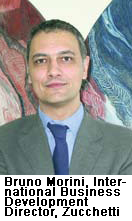 High Image Quality
High Image Quality
To begin, stadiums need high image quality to be able to identify and recognize individuals in the crowd. "At stadiums, the most attention is directed to monitoring the fans, because they represent the most costly potential liability," said Dave Tynan, VP of Global Sales, Avigilon. With high emotional interaction comes potential conflict between stadium management and patrons. Addressing unlawful activity, particularly unruly or violent behavior, often leads to the accused responding with allegations of manhandling upon rejection from a facility. These types of liabilities represent potentially significant dollars lost to litigation activities, explained Tynan. To mitigate these situations, megapixel cameras can be installed for not only live viewing, but also for archiving and video forensics.
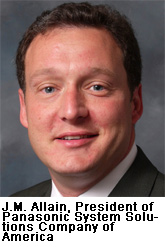 With its wide-area coverage, megapixel cameras can be placed to view spectator stands as well as entrance areas. "Megapixel cameras work great at entry points to the stadium because they allow you to zoom in on an image after it has been recorded with little loss of resolution. Additionally, entry points provide a controlled environment with a better opportunity to capture detailed images of a person's face, size and shape," said Legere.
With its wide-area coverage, megapixel cameras can be placed to view spectator stands as well as entrance areas. "Megapixel cameras work great at entry points to the stadium because they allow you to zoom in on an image after it has been recorded with little loss of resolution. Additionally, entry points provide a controlled environment with a better opportunity to capture detailed images of a person's face, size and shape," said Legere.
To maximize the use of assets, analog cameras can be used in conjunction with megapixel cameras to create a hybrid system. "Integrating both types of cameras can save users roughly 10 to 15 percent in operational costs," said Tynan.
Wide-Area Surveillance
Stadiums often utilize PTZ dome cameras to monitor surveillance stands, owing to 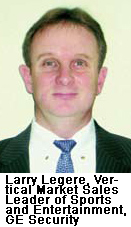 its wide-dynamic range capabilities and adjustments to varying lighting conditions at stadium lobbies, entrances and balconies, said J.M. Allain, President of Panasonic System Solutions Company of America.
its wide-dynamic range capabilities and adjustments to varying lighting conditions at stadium lobbies, entrances and balconies, said J.M. Allain, President of Panasonic System Solutions Company of America.
"Lighting conditions affect image quality, but as PTZ dome cameras can be built with auto irises that focus and readjust for lighting, they are entirely suitable for stadium surveillance use," explained Legere. Dome camera technology can capture unsurpassed quality images especially when sunlight and artificial light sources overlap — such as light filtering through seating runways in the stands, food court areas and gate entrances — and outdoors in areas that transition from day to night with bright headlights, said Allain.
To maximize capabilities, PTZ dome cameras can be programmed based on the actual seating layout of the stadium. For example, if security personnel received a call of disturbance in a certain section, they can simply enter the section number, and system controllers will automatically turn the designated camera to view the section, zoom in and verify the activity, before making the appropriate decisions, explained Allain.
Dome cameras can also allow users to track, identify and recognize suspicious  individuals and behaviors, with its ability to view various ranges and directions, said George Ko, VP and GM of North Asia, Honeywell Building Solutions. These cameras give security personnel the opportunity to take a close-up look at suspicious spectators and follow them, as troublemakers often have a tendency to move around looking for opportunities or escape routes, emphasized Erlend Bjorstad, Key Account Manager of G4S Security Services.
individuals and behaviors, with its ability to view various ranges and directions, said George Ko, VP and GM of North Asia, Honeywell Building Solutions. These cameras give security personnel the opportunity to take a close-up look at suspicious spectators and follow them, as troublemakers often have a tendency to move around looking for opportunities or escape routes, emphasized Erlend Bjorstad, Key Account Manager of G4S Security Services.
Intelligent Analytics
Crowd management and identifying suspicious behavior are amongst the chief concerns of large-scale stadium security; thus, video analytics are rapidly becoming a necessity for proactive video surveillance. From basic analytics like unattended object detection or loitering and virtual trip wires, to facial identification, to sophisticated behavioral analysis, video analytic capabilities stretch far and wide, and increase the efficiency of security personnel, said Legere. Additional useful features include linking the analytics with audio analysis, which can identify particular tones denoting aggressive or violent behavior within the stadium,  focusing surveillance cameras on hot spots, said Dr. Alan Hayes, founder and MD of AMG Systems.
focusing surveillance cameras on hot spots, said Dr. Alan Hayes, founder and MD of AMG Systems.
For behavioral analysis, current research is focused on the ability to recognize subtle actions such as tampering with machinery or taking photographs, whereas for facial recognition, research is on its way to detect physiological cues such as micro facial expressions and subtle changes in facial temperature, both of which are indicative of stress and possibly deception, said Dr. Peter Tu, Research Scientist and Member of the Visualization and Computer Vision Group at GE Global Research.
Infrastructure
In a large stadium with tens of thousands of spectators, VIP guests, athletes and staff, IP infrastructure allows for simultaneously streaming the same video image to any given position on the network. From a security perspective, perhaps the most important measure for using IP infrastructure is reducing the single-point-of-failure factor. As all video streaming is redundant, if a server or cable fails, the video stream will continue streaming, completely uninterrupted, to the backup server and also to any monitoring position on the network, said Bjorstad.
Alongside, an IP infrastructure has the benefits of an expandable architecture that  is convenient, manageable and resilient. Bosch Security Systems experts added that IP infrastructure allows for a seamless integration of systems, including video surveillance, access control, turnstiles, gates, fences, entrances and other systems such as public address and voice evacuation systems, to make a comprehensive security solution.
is convenient, manageable and resilient. Bosch Security Systems experts added that IP infrastructure allows for a seamless integration of systems, including video surveillance, access control, turnstiles, gates, fences, entrances and other systems such as public address and voice evacuation systems, to make a comprehensive security solution.
However, the use of analog cameras via fiber optic transmission is a solution that rivals current demands for IP infrastructure. Real time live surveillance and good picture quality are produced from uncompressed images, and fiber optic transmission brings video signals back to the control room uncompressed, through a mixture of analog and Ethernet transmission technologies, said Hayes. The main advantage of using fiber optic networks is that picture quality remains excellent as it retains the full content while the analytics can be administered from a single point such as the control room, rather than in every single camera (as it would be for IP cameras). Users then have the flexibility to choose which analytics to purchase and which cameras to operate it in, continued Hayes. Like the flexibility of IP infrastructure, fiber optic transmission is also expandable and forward compatible, while not being as susceptible to the dangers of hacking.
Authorizing Access
Previously at stadiums, regulations for access control only encompassed passive 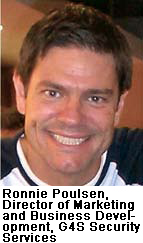 security such as seating arrangements, number of emergency exits and evacuation plans, said Navin Rajendra, Senior Research Analyst of Frost & Sullivan. Today, access control can prevent counterfeiting of tickets, unauthorized access and maintain general order in admitting large numbers of people. Major points of access control at stadiums include entrances, Press boxes, player areas, umpire rooms, changing rooms, VIP areas and restricted areas (IT and technical rooms), said Bosch Security Systems experts. To manage these points, a mixed population of technologies is used, including biometrics, to secure more vulnerable areas.
security such as seating arrangements, number of emergency exits and evacuation plans, said Navin Rajendra, Senior Research Analyst of Frost & Sullivan. Today, access control can prevent counterfeiting of tickets, unauthorized access and maintain general order in admitting large numbers of people. Major points of access control at stadiums include entrances, Press boxes, player areas, umpire rooms, changing rooms, VIP areas and restricted areas (IT and technical rooms), said Bosch Security Systems experts. To manage these points, a mixed population of technologies is used, including biometrics, to secure more vulnerable areas.
For crowd control purposes, entrances can have multiple technology readers attached to the turnstiles, said Morini. When a person swipes his or her card, intelligent software in the access control system can determine if the card has already been used to gain entry, and allow or deny access to that person. To ensure order and flow of patron entrance, it is possible to guarantee 80,000 people access to the venue with a relevant number of turnstiles, each admitting up to 800 people per hour, continued Morini.
Aside from main entrance vulnerabilities, stadiums are also concerned with tailgating. Ways to eliminate this problem include installing optical turnstiles, whereby the device will sound an alarm if more than one person tries to enter,  said Legere. Integration with video analytics at entrances is also necessary to detect and prevent tailgating as well as keep track of individuals who enter the venue.
said Legere. Integration with video analytics at entrances is also necessary to detect and prevent tailgating as well as keep track of individuals who enter the venue.
Solutions combining the latest technology of biometrics and RFID help manage the crowd and keep audiences away from threats and attacks in the stadium, said Parul Oswal, Industry Analyst, Frost & Sullivan. For example, fans of opposing teams are restricted to areas that do not overlap, to prevent violent conflicts, said Ronnie Poulsen, Director of Marketing and Business Development, G4S Security Services. By limiting people's access, high emotional levels can be managed and unruly behavior, mitigated. Richard Sebastian, Research Analyst of Frost & Sullivan, added that RFID technology integrated with video surveillance can also help lost individuals find their companions in large stadiums through information kiosks at each zone.
Finally, advanced access control systems allow for predefined modes; this organizational function further ensures the security of the stadium, as access  depends on each cardholder's role, obligation and permissibility during different events, said Bjorstad.
depends on each cardholder's role, obligation and permissibility during different events, said Bjorstad.
Integration and Automation
Previously at large stadiums, perimeter control, access control, video surveillance, parking lot management, ticketing and crowd control were not integrated to a central level, said Ko. Technology today has made system integration possible, easier and more economical. There is an increasing need, for example for users to be proactive by simultaneously linking an image of a person to denying or allowing them access, all the while continuously tracking that particular person, continued Ko. Additionally, integration of systems allows operators to see things from one location, without having to change software or blindly send guards to examine situations of minor interruptions, said Legere.
With integration comes more automation and increased efficiency. For example, when a person enters an area via his or her access card, the access control system can notify the central control platform. Once notified, the central control platform can automatically switch the lights and air conditioning on in that particular area. Furthermore, cameras can digitally process the images to assess the density of the people in the area, and lighting or air conditioning can then be adjusted accordingly, explained Ko.
Multipurpose Stadiums
Often the conundrum associated with stadiums is a discrepancy between the money and technology invested, and the benefits gained. Becase large - scale sporting venues are typically purpose built (such as the World Cup or the Olympics), once the event has been hosted, stadium directors and owners need to find games or other entertainment events to host. Today, stadiums are 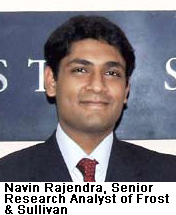 designed for multiple purposes, such as conferences, concerts and other types of conventions or exhibitions, said Poulsen.
designed for multiple purposes, such as conferences, concerts and other types of conventions or exhibitions, said Poulsen.
Because of this, a critical driver of the market will be an increase in demand for security implementation and for the venue's various marketing applications, said Morini. To envision stadiums as multipurpose venues opens countless doors of marketing opportunities, from actual businesses within the stadium such as restaurants and shops, to using the security technology available to enhance customers' overall experience. It is, therefore, not only a large and diverse market, but one spurred from creativity and imagination, where security standards and technology can be used out of character to protect and profit staff and patrons alike.